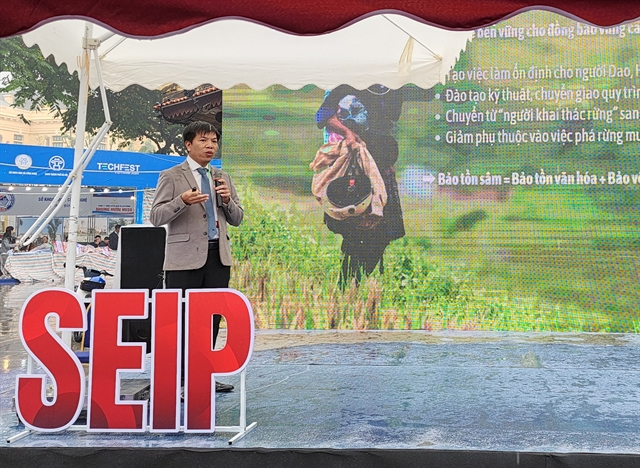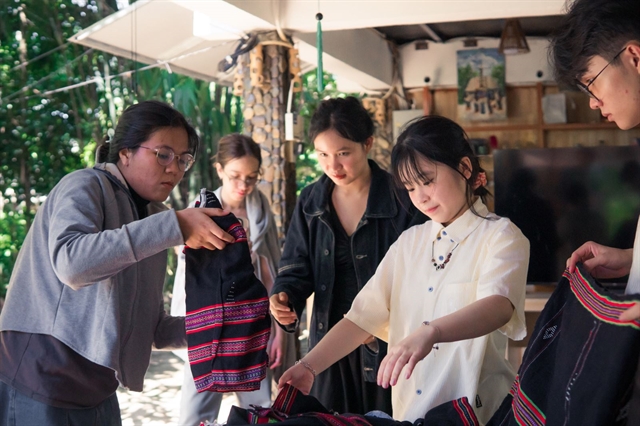 Features
Features

The historical and cultural values of the Đồng Đậu archaeological site in the northern province of Vĩnh Phúc will be further promoted thanks to a project to build the site into an archaeological park.
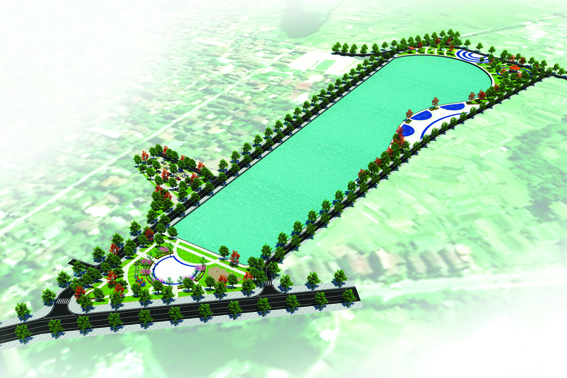
|
| Overall perspective of Đồng Đậu Park in Yên Lạc Town, Vĩnh Phúc Province. Photo baovinhphuc.com.vn |
The historical and cultural values of the Đồng Đậu archaeological site in the northern province of Vĩnh Phúc will be further promoted thanks to a project to build the site into an archaeological park.
First unearthed about 60 years ago, and recognised as a national historical-cultural relic in 2000, the famous archaeological site features elements of the Đồng Đậu culture (1,500-1,000 BC), one of the late prehistoric Bronze Age cultures in the Red River Delta of Việt Nam.
Numerous artefacts of the four cultures during the time of the Hùng Kings, about 4,000 years ago, have also been found through several excavations at Đồng Đậu, which is known as one of the country's largest archaeological sites covering a total area of 8.5ha in Đông Village of Yên Lạc Town.
The four cultures includes Phùng Nguyên, Đồng Đậu, Gò Mun, and Đông Sơn.
The project for Đồng Đậu Park in Yên Lạc Town, Yên Lạc District, will cover 5.4ha with an investment of VNĐ90 billion (nearly US$4 million), and be scheduled for completion by 2025.
It is expected to contribute to preserving the historical and cultural values of the site, and to combine with the Gia Loan Temple and Biện Sơn Pagoda to create a highlight for spiritual and heritage tourism in the locality.
It is also designed to expand the green space for residents, according to a report published by the Yên Lạc District administration.
Scientific proof
The Đồng Đậu archaeological site is important not only for understanding the sequence of prehistoric cultures in the Red River Delta region but also for the insight it provides into the development of early civilisations in Việt Nam, according to Dr Nguyễn Quang Miên, an archaeologist, at the Institute of Archaeology in Hà Nội.
In his research on radiocarbon dating of the Đồng Đậu period, the archaeologist said the relative chronology of the prehistoric cultures of the Red River had been established.
The Đồng Đậu culture was preceded by the Phùng Nguyên, and succeeded by the Gò Mun and Đông Sơn cultures.
He revealed that the distribution of 17 archaeological sites belonging to the Đồng Đậu culture had been identified. All of them are scattered throughout the Red River Valley in the Bắc Bộ (northern region), including the provinces of Vĩnh Phúc, Phú Thọ, Bắc Ninh, Bắc Giang and Sơn Tây, as well as in the city of Hà Nội.
Most sites are located in low-lying areas next to rivers, terraces or small hills in the centre of the North.
Using statistical methods, the scientist has obtained a date range for the Đồng Đậu culture, putting it at about 3,600 to 3,050 years ago. This dating is in accordance with the dates proposed by Professor Hà Văn Tấn (1999).
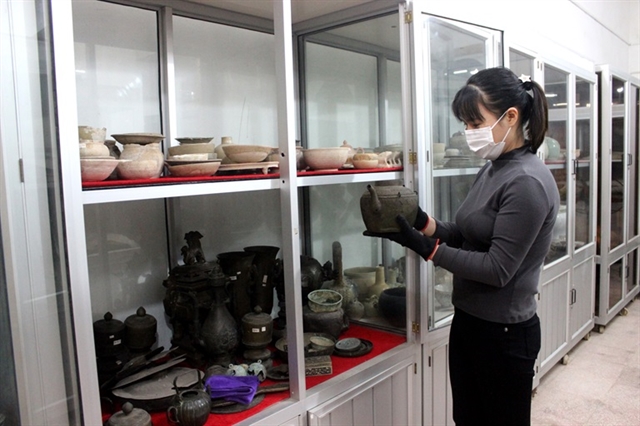
|
| A female employee cleans antiquities preserved at the provincial museum in Vĩnh Phúc. Photo baovinhphuc.vn |
In another development, archaeologists in 2013 discovered a tomb containing the remains of a man who was believed to live in the Phùng Nguyên era about 3,500 years ago, at the Đậu relic site in Vĩnh Phúc.
Professor Nguyễn Lân Cường, general secretary of the Việt Nam Association of Archaeology (VAA), said the remains were unearthed during an excavation jointly conducted by the VAA, the History Faculty of the University of Social Sciences and Humanity, and the Vĩnh Phúc provincial culture authority.
The remains, believed to be a 1.6 metre-tall man, were sent to the province’s museum for further research and preservation.
Many other artefacts such as stone axes and graters, bronze arrows, ceramics and jewellery made of stone, animal horns and bones were also found during the evacuation. Scientists dated them back to the Đồng Đậu, Gò Mun and Phùng Nguyên cultures.
Since its first discovery in 1962, the Đồng Đậu archaeological site has been strictly protected and preserved for excavations, research and study tours for specialised scientific agencies, scientists and researchers.
The heritage site has undergone seven major explorations and excavations since 1965, with a total area of 758 sq.m, concentrated on the southern, eastern and western parts with an average depth of over 3m including some places up to 6m.
The seventh excavation carried out in December 2012 in the west of the site covered an area of 25sq.m and unearthed numerous artefacts reflecting the life of the ancient Vietnamese.
These important discoveries not only helped to increase the archaeological value of the site but also created favourable conditions for researching and defining the country's early culture,
Prof Hòang Xuân Chính, who led three archaeological excavations at Đồng Đậu, said that there had been no archaeological sites in the country as meaningful and valuable as Đồng Đậu.
"Each excavation helps us get closer to and know better about our prehistory. We really hope that Vĩnh Phúc will make more investments in the relic site, and take great measures in managing and protecting the nation’s special site,” he said.
By the end of 2012, the Vĩnh Phúc Department of Culture, Sports and Tourism established a project repairing Đồng Đậu archaeological site with VNĐ3.2 billion, invested by the Yên Lạc People's Committee.
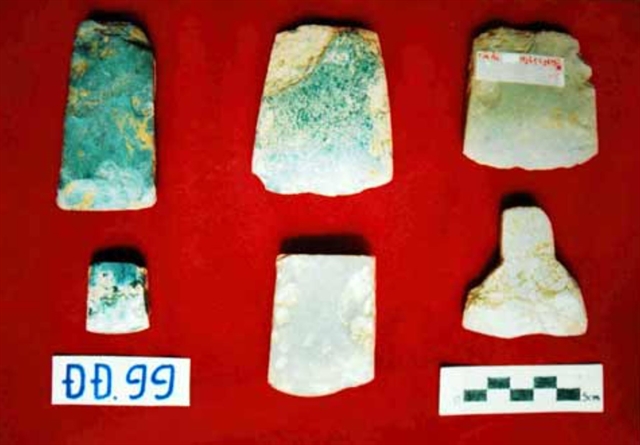
|
| Some of the artefacts discovered in an excavation in 1999 in the Đồng Đậu archaeological site. Photo vinhphuc.gov.vn |
As the Đồng Đậu heritage site has many precious mysteries, the cultural preservation and protection of the site is essential, the local district authorities have noted.
The area is the origin of the ancient Vietnamese and a store of cultural and historical values, which will leave a unique legacy for future generations.
Once Đồng Đậu Park is finished, it is expected to help boost tourism in local areas and promote the special historical and cultural values of Yên Lạc District and Vĩnh Phúc Province in general. VNS

|
| The present Đồng Đậu archaeological site in Yên Lạc District, Vĩnh Phúc Province. Photo vanhoavaphattrien.vn |

